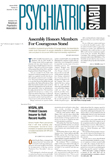Almost 10 percent of a sample of 3,369 postmenopausal women reported experiencing a full-blown panic attack in a six-month period prior to a Women’s Health Initiative study. Women with migraines, emphysema, and depressive symptoms were more likely to experience panic attacks than those without these conditions.
As part of the study, which was published in the September 22 Archives of Internal Medicine, Jordan Smoller, M.D., Sc.D., and colleagues interviewed 3,369 women aged 50 to 79 between December 1997 and November 2000. The women were enrolled in the Women’s Health Initiative, a multisite study designed to identify health problems in postmenopausal women. In addition to being the principal investigator on the study, Smoller is an assistant professor of psychiatry at Harvard Medical School.
Participants completed questionnaires pertaining to panic attacks, migraines, depression, and adverse life events such as the death or serious illness of a family member or friend.
Researchers distinguished between two types of panic episodes based on responses to the question about panic. They defined “full-blown panic” as an attack of sudden fear, anxiety, or extreme discomfort during the past six months accompanied by four or more symptoms from a 12-symptom checklist. In “limited-symptom panic,” the episode is accompanied by fewer than four symptoms on the checklist.
Smoller found that 17.9 percent of the women experienced one of the two types of panic in the six months prior to being interviewed—9.8 experienced full-blown panic, and 8.1 percent experienced limited-symptom panic attacks.
“This finding was somewhat surprising,” Smoller told Psychiatric News. “Previous studies have suggested that panic attacks might be relatively uncommon in older women.”
He also found that women with a history of migraine with aura were 6.4 times more likely to experience full-blown panic than those without the condition. Aura was defined as seeing spots, jagged lines, or “heat waves” out of one or both eyes before the migraine.
A dysregulation of serotonin is thought to underlie both panic and migraine, according to Smoller, although not much is known about the exact nature of the neurotransmitter system malfunction in either condition, he said.
Women who screened positive for depressive symptoms were more than five times as likely to experience a full-blown panic attack, the researchers found, and those with a history of emphysema were four times as likely to experience such an attack.
In addition, women who reported a low annual income (defined as less than $20,000 a year) were 2.7 times more likely to experience full-blown panic than those who earned a higher salary. Those with three to four adverse life events in the preceding year were 4.7 times as likely to experience full-blown panic as those with no stressful life events.
Women with a history of cardiovascular disease were almost three times as likely to experience full-blown panic than those with no history of heart problems.
Smoller said he is now studying the connection between panic attack and a variety of health outcomes and whether panic attacks predict cardiovascular events, for instance.
Arch Intern Med 2003 163 2041
